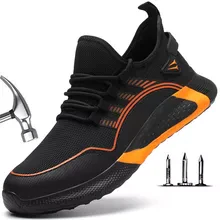It is important to choose the appropriate shoe based on the person’s need, the features of the shoe, and the nature of the physical activity, and that it be:
Lightweight and allows the foot to breathe.
The lining of the heel should be thick.
It must have a stable heel to stabilize the foot.
It should be moderately flexible and not have a very rigid base (when holding the ends of the shoe with both hands and bending it, it will bend).
It provides excellent support for the foot.
It should be equipped with a layer to cushion the foot.
The high price of a shoe does not always guarantee adequate features.
Things to consider before buying shoes:
foot type:
Foot shape: Feet come in many shapes and sizes; Therefore, the shape and size of the feet should be taken into account when purchasing walking shoes to avoid painful problems later.
Foot arches: They help distribute body weight evenly on the feet when walking, and play an important role in how we adapt to different surfaces while walking.
shoe size:
Shoes that are too tight or wide can lead to the appearance of blisters, painful ulcers, or corns, in addition to exacerbating foot disorders (such as deformity or enlargement of the toe bones), which occur due to the small and narrow front space of the shoe, and the lack of sufficient space for the toes.
Walking type:
Such as walking at a moderate or fast pace, or in nature and rugged areas.
weather condition:
Dry weather: Needs shoes that allow the feet to breathe.
Rainy weather: Waterproof shoes are needed to keep the feet dry.
All Weather: You need waterproof shoes to protect feet from rain without overheating feet (non-ventilation) in dry conditions.
note:
Feet size can change with age. It also increases in women during pregnancy.
The feet must be kept clean by washing and drying them, especially between the toes. To reduce the chance of bacteria or fungi accumulating.
Trim nails regularly.
Choose cotton socks; Because it allows the feet to breathe.
Change socks daily.
It is preferable to check the shoes before wearing them. To ensure that it is free of harmful things such as gravel, etc.
Sterilize shoes after use by placing them to dry in the open air.
Keep your feet warm and practice physical activity to improve blood circulation.
A doctor should be consulted if there is persistent and abnormal pain.
Shoe components:
Upper: Usually made of leather, mesh, or synthetic materials. Mesh allows better ventilation and is lighter.
Front Toe Cap: Provides room for toes; It provides comfort to the fingers and prevents pressure on them while walking.
Shoe lining: supports the arch in the sole of the foot, and may be removable. So that a person can take it out to dry between periods of walking or washing.
Gel, air, or foam cushioning: These materials limit the impact of shock when the foot hits the ground.
The outer lower part: This is the part that rubs against the ground, and its zigzags can help maintain stability.
The back: is the part that supports the ankle; To ensure proper measurement.
Tips while buying shoes:
Wear socks designed for sports when trying on shoes before buying them.
Make sure to buy after walking; The feet are at their largest size, and this swelling is taken into account when measuring the shoe.
It is preferable to stand while measuring to get a more accurate size.
You should walk in the shoe before purchasing it to determine its fit.
The measurement that fits the larger foot should be taken when one foot is larger than the other.
You must measure both pairs of shoes and check their fit when walking.
The ability to move the toes, by bending the toes and moving the joints naturally; Therefore, there should be a space of at least half an inch (1 cm) between the longest toe of the foot and the end of the shoe, approximately approximately the width of the toe; So as not to cause pressure on the fingers.
Make sure that the width of the shoe is appropriate, comfortable and not tight.
The heel height of the shoe should not exceed 4 cm.
Make sure that the heel fits comfortably and does not slip when walking.
Replace shoes:
All walking shoes will eventually show signs of wear, even if they are still comfortable and don't show many signs of external wear, they may not offer enough support or shock absorption; Therefore, shoes must be changed in the following cases:
When the lower outer part of the shoe is worn out.
When you get about 300 to 400 miles of running or walking in your current shoes; It loses its shock absorption feature after covering this distance.
Tips to prevent ulcers:
Make sure to keep the feet dry.
Make sure to wear socks when putting on shoes.
Wear properly fitting shoes.
Tips for people with diabetes:
Check your feet every day and examine the soles of your feet with a mirror.
Wash and dry your feet every day, especially between the toes.
Trim nails carefully.
Do not walk barefoot at home; The sole of the foot may be injured and the patient may not feel it.
Wear shoes and socks at all times.
Protecting the feet from heat and cold.
Avoid wearing tight shoes or socks.
Do physical activity to maintain blood flow to the feet.





0 Comments